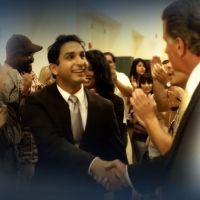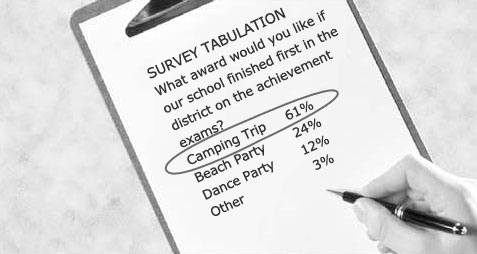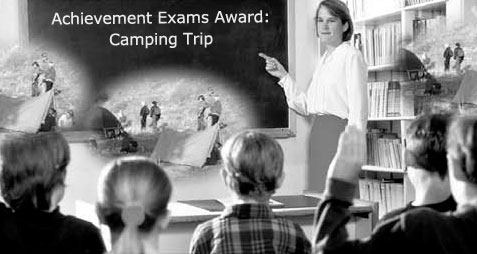As you read earlier in this course, it is important to use reality in PR and to know the reality level of the public you are addressing.
Surveys accomplish this.
In public relations terminology, “survey” means to carefully examine public opinion with regard to an idea, a product, an aspect of life or any other subject. By examining in detail (person to person surveying) one can arrive at a whole view of public opinion on a subject by tabulating highest percentage of popular response.
But what does this mean to an individual on his own? Certainly he cannot rush out and hire polling experts or a research company to tell him all about the neighbors in the new neighborhood he just moved into or what students think in class or what fellow employees at work think about his project.
The fact is, a person can do his own surveys very easily.
A survey is done in order to find what
In a survey, you question people to get their opinion on something. A button is the primary datum you get from this action. It is the answer given the most number of times to your survey question. It is what will
Surveys can also be designed to tell you what people detest.
With a knowledge of a public’s reality as gained through surveys, one has opened the door to informing them of the ideas one wants them to accept—in other words he can get his message across.
The message is the communication, the thought, the significance you want to get across to an audience or public.
A button is used to get the public’s agreement to hear the message.
A message and a button are not the same thing.
By doing a survey and finding the right button, you can then use that button to elicit agreement and thereby get response.
To do a proper survey and to then use its results effectively requires an understanding of the purpose of surveys, and of ARC and the ARC triangle. It requires an understanding of what reality is.
One uses the ARC triangle in conducting a survey initially and, following that, one applies the ARC triangle in putting the survey results to use.
It goes like this: One communicates to an audience or public (via a survey) with affinity to find out what the reality of that audience is. Reality is agreement as to what is. The reason you do a survey is to find out what that audience or public will agree with.
One then approaches the public with that reality in a promotional piece or some other communication to get the public’s agreement to hear the message. And thus one raises the public’s affinity for the item one is promoting.
That is the simplicity of it. But it will only be simple to the person who understands the ARC triangle. Without reality or some agreement, communication will not reach and affinity will be absent.
Thus, surveys are done to get agreement. Surveys are not done for any other purpose. They’re done to establish agreement with an audience.
You ask ten or ten hundred people what they would most want or expect of an automobile tire and seven or seven hundred of them tell you “durability.” That’s the button. That’s the reality, the point of agreement on automobile tires among that public. So you use that button with that public and you’ve established reality; you’ve got agreement and they will then listen to what you have to say about automobile tires.
SURVEY EXAMPLE
Here is an example of an actual survey. A group of Scientologists in South Africa was interested in finding out how best to reach children in rural townships with an educational program using
The questions asked and the top answers with their percentages were:
1. Who do you take advice from?
73% Parents
13% Brother or sister
5% Teacher
2. What do you feel is the biggest problem in the world today?
50% Violence, war
15% Nothing, no problem
10% Education
3. What could be done to change that?
23% Stop it
15% Nothing, no problem
10% Education
4. What in your life would you like to change the most?
25% Violence, hatred
18% The situation, everything
15% Education
5. What in your life is going the best?
33% Education
30% Nothing
15% Everything
6. What thing in your life do you look forward to the most?
58% School, education
10% Don’t know
10% Everything, anything
Buttons have their use but we are not so much interested in them as we are in message. The message is the real essence of any promotional piece or PR communication. Buttons are just the grease to use to get your message through.
A survey like the one in the example just given would be of great use in reaching children with tools by which they can learn and receive a meaningful education.
Buttons found from the survey include:
Parents—these children listen to their parents.
Violence, war—this came up as their biggest problem and something they would most like to change.
Education and school was the part of their lives which they most look forward to.
Having conducted such a survey, the results could then be used by this group to get their program better known and accepted. Their basic message is that workable methods of education exist and will help them. Using these survey results they could state their message so it would be better accepted. They could say, for example, “Education is the solution to violence and a better life for you, and our program will help you get a valuable education.”
How to Conduct a Survey
The actions involved in doing a survey are simple and few. The first thing is to establish the questions you are going to ask the public to find out what is wanted and needed, popular or unpopular or whatever.
After the questions are established, they are written or typed on a piece of plain paper for the surveyor to refer to. If one were doing a survey in a city where large numbers of people were interviewed, survey forms might be most practical. However, all that is needed for most surveys is a clipboard with plenty of plain paper and several ballpoint pens (so running out of ink in the middle of the survey doesn’t cause interruption). The survey question page is then placed on top of the pad of paper and flipped back while taking notes of the interview.
To begin a survey, you simply walk up to a person and in a friendly manner introduce yourself (if a stranger) and ask to survey them. If the person asks for more information about the survey or why it is being done, his questions are answered and the survey is begun.
Ask the person the first question, flip back the question page and take down the answer. Be sure to number the answers corresponding to the question number being asked. You needn’t write down every word as the person speaks to you, but get the most important points. You will find, after practice surveying, you can write almost everything down.
After the person has answered the first question, thank him or her and go to the next question.
At the end of the survey, thank the person. The person will most likely be thanking you at this point as people love to be asked their opinion of things. And having another person listen attentively is a rare and valuable experience to many.
Then go to the next person and repeat the same procedure. This is all there is to the mechanical action of surveying.
Tabulation of Surveys
Once a survey is done, the responses have to be tabulated in order to be usable.
The word “tabulate” is defined by Webster’s New World Dictionary as, “to put (facts, statistics, etc.) in a table or columns; arrange systematically.”
In tabulating survey responses, you are arranging the data gathered systematically in order to permit analysis of those results. The definition of “analysis” could be stated as “examination in detail so as to determine the nature or tendencies of.”
The most commonly used format for survey tabulations is to list each question, with the categories of responses and their percentages laid out from highest percentage to lowest under each question.
In order to accomplish public relations that are effective and which communicate one’s message and make one’s good works well known, it is essential that one know what his publics want or will accept, what they will agree with and what they will believe.
Surveys, then, give one the reality of one’s public. Without them, one is going at it blindly in a hit-or-miss fashion that will not get him very far.
TABULATION PROCEDURE
1. Count all the surveys.
2. Establish various categories of answers for each question by listing answers briefly but accurately as you go through the survey responses.
3. When categories have been established, you will be able to simply mark a slant next to the appropriate category, meaning one more answer of a similar nature.
4. Once all the responses have been tabulated, count up the number of responses in each category for each question.
5. Work out the percentage for each category under each question. This is done by dividing the number of surveys and multiplying by 100. Let’s say you had 1,500 answers of a similar nature to one question and your total number of surveys is 2,500.
1,500 ÷ 2,500 = 0.6 x 100 = 60
This means 60 percent gave that similar type of answer.
6. The only mistake you can make is not to realize the similarity of answers and so have a great diversity of categories.
in surveying, the subject, phrase or concept that is real to the majority of persons in a group and which can be used to get a response and gain agreement. The term comes from the early 1900s expression “press the button” which means, in a figurative sense, “to perform an action that automatically brings about the required state of affairs.”
draw out, cause or produce something as a reaction or response.
Scientology is a practical religion dealing with the study of knowledge, which through application of its technology can bring about desirable changes in the conditions of life. It was developed over a third of a century by L. Ron Hubbard. The term Scientology is taken from the Latin word scio (knowing, in the fullest meaning of the word) and the Greek word logos (study of). Scientology is further defined as the study and handling of the spirit in relationship to itself, universes and other life.




